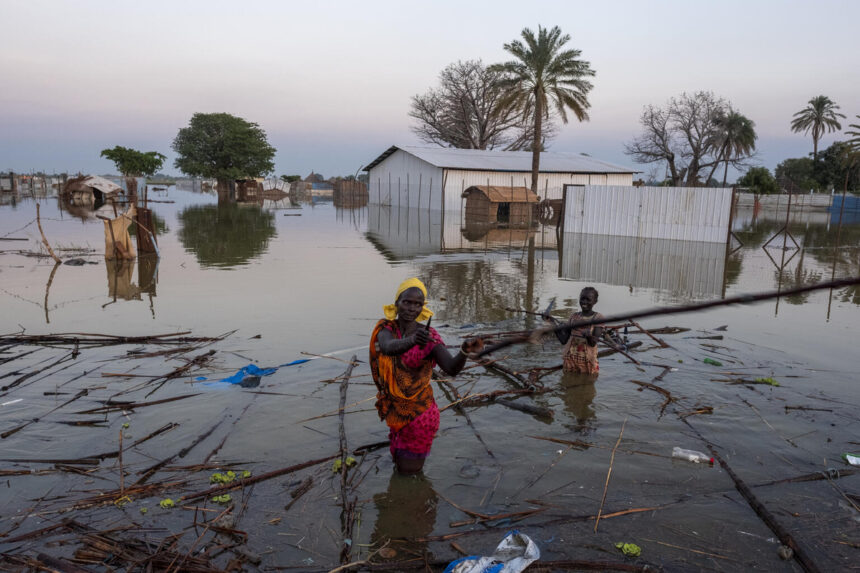Introduction to Climate Change and Hydrology
Climate change is one of our world’s most critical challenges, profoundly impacting various environmental systems, including water resources and hydrology. As climate patterns shift, water resource distribution, availability, and quality are significantly altered. Understanding these changes is crucial for developing effective strategies to mitigate and adapt to the impacts of climate change. Hydrology, the scientific study of water movement, distribution, and quality, is essential in addressing these challenges. Specialists, such as water expert witnesses, are vital in providing insights and recommendations for sustainable water management.
Climate change directly affects hydrology through changes in precipitation patterns, temperature, and the frequency and intensity of extreme weather events. These changes have far-reaching implications for ecosystems, agriculture, urban planning, and public health. The connection between climate change and water resources is complex, necessitating a comprehensive understanding of hydrological processes and their interaction with climatic factors. Significant efforts are being made worldwide to study these relationships and develop adaptation strategies that can help mitigate the adverse impacts.
Impact on Precipitation Patterns
One of the most observable effects of climate change on hydrology is the alteration in precipitation patterns. These changes can lead to increased frequency of extreme weather events like heavy rainfall and droughts. For instance, regions traditionally receiving moderate and consistent rainfall may experience short, intense downpours or prolonged dry spells. Such fluctuations in precipitation can strain existing water storage and management systems, leading to issues such as flooding or water scarcity.
The Intergovernmental Panel on Climate Change (IPCC) reports that the frequency and intensity of heavy rainfall events have increased globally, contributing to more frequent and severe flooding. This affects urban areas with inadequate drainage systems and the rural regions dependent on agriculture. Conversely, prolonged periods of reduced rainfall and higher temperatures can exacerbate drought conditions, leading to water shortages and reduced agricultural productivity. These changes in precipitation patterns underscore the need for adaptive water resource management strategies that can accommodate both extremes. The imbalance in water resources demands innovative solutions to manage floodwaters effectively while ensuring that areas suffering from drought receive adequate water supplies.
Changes in Water Availability
The variability in precipitation greatly influences water availability. Some regions may experience water scarcity, while others might face flash floods. Both scenarios pose significant challenges for sustainable development and water resource management. To ensure resilience, it’s essential to employ adaptive water resource strategies. For instance, integrated water resource management (IWRM) approaches can help balance water demand and supply, considering the needs of different sectors such as agriculture, industry, and domestic use.
Glaciers and snowpacks serve as critical reservoirs of freshwater in many parts of the world. These frozen water reserves are shrinking as global temperatures rise, reducing water availability during the warmer months. This phenomenon affects the local ecosystems and millions of people who rely on meltwater for drinking, irrigation, and hydropower. Addressing these challenges requires a multifaceted approach that includes water conservation, efficient water use, and exploring alternative water sources. The melting of these natural reservoirs particularly impacts communities in mountainous regions that depend on glacial meltwaters for their livelihood. Innovations in water storage and conservation practices have become crucial in these settings.
Effects on Water Quality
Climate change also affects water quality through increased runoff, which carries pollutants into water bodies. Higher temperatures can exacerbate the growth of harmful algal blooms, adversely impacting aquatic ecosystems and water safety. The World Health Organization Emphasizes the necessity of maintaining strict water quality standards to protect public health. Contaminated water sources can lead to the spread of waterborne diseases, posing significant health risks to communities.
In addition to biological contaminants, climate change can increase the concentration of chemical pollutants in water bodies. For example, higher temperatures can accelerate the breakdown of organic matter, increasing the levels of nutrients such as nitrogen and phosphorus. This process, known as eutrophication, can lead to oxygen depletion in water bodies, harming aquatic life and reducing water quality. Addressing these water quality issues requires comprehensive monitoring and management strategies considering natural and anthropogenic factors. Implementing broad-based water quality monitoring systems and developing stringent water treatment processes are essential to combat these adverse effects.
Adaptation Strategies for Water Resource Management
Adapting to these challenges necessitates a shift toward sustainable water management practices. This includes implementing integrated water resource management (IWRM), building resilient infrastructure, and fostering community involvement. Employing technology for better water management and predictive analytics can also mitigate the adverse impacts. For example, advanced hydrological modeling and forecasting tools can help predict the effects of climate change on water resources, enabling proactive management and planning.
Another essential aspect of adaptation is the promotion of water conservation and efficiency measures. This can include adopting water-saving technologies in agriculture, industry, and households, as well as implementing policies and regulations that promote sustainable water use. Public awareness and education campaigns can also play a crucial role in encouraging communities to adopt water-saving practices. By integrating these strategies, it is possible to build resilient water management systems that can withstand the challenges posed by climate change. Community-based initiatives and educational programs are particularly effective in promoting the sustainable use of water resources and fostering a culture of conservation at the grassroots level.






